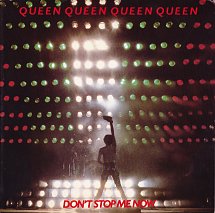“I Want To Break Free” is one of Queen’s most controversial but iconic songs. Recorded in 1983 but released in 1984 on their 11th studio album “The Works”, it’s the sixth track on the album and probably the most popular.
Written by bass guitarist John Deacon, the title of the track explains the premise of the song. The narrator has fallen in love, but knows that the relationship isn’t for them: “I want to break free from your lies / You’re so self-satisfied I don’t need you”, as well as “I don’t want to live along, hey / God knows, got to make it on my own”. However, the protagonist loves them so, but knows that the relationship is toxic and not right for them.
The music video was directed by David Mallet, and shot in May 1984 at Limehouse Studios in London, costing £100,000. The music video parodies the popular British soap opera “Coronation Street”, depicting Freddie Mercury, Roger Taylor, Brian May and John Deacon as female characters from the show. Mercury vacuums the floor and signs the first verse, then leading to a dark space through a door. The group was surrounded by figures wearing miners helmets and Mercury singing in a dark space. Contrary to popular belief, the idea for the video was not Mercury’s idea, Q Magazine found out in March 2011 when Brian May was asked if each band member’s character was an accurate reflection of their personalities. “Of course! Everybody thinks it was Freddie’s idea because it looks like something he would love to do but it actually came from Roger’s girlfriend at the time, strangely enough. It was her idea to pastiche the Coronation Street women.”
When the video was aired in 1991 on VH1, it was met with mixed reactions. It was celebrated in countries such as the UK where it was understood and taken as a joke, but the US audience failed to see the soap-opera connection and interpreted the video as an open declaration and celebration of transvestism, consequently banning it from MTV. In other countries such as South Africa and in South America, the track was received with open arms and highly praised as it was seen as a fight against oppression. However, when Mercury sung the track in front of over 325,000 in Rio de Janeiro, the audience began to throw stones at him while in his female outfit. Mercury removed his false breasts and wig once he realised his outfit was triggering the audience, but the experience puzzled and disappointed Mercury. The music video has over 226 million views on the Queen official YouTube channel.
Release Date: 2nd April 1984
Songwriter/s: John Deacon
Producer/s: Queen, Reinhold Mack
Label/s: EMI, Capitol, Toshiba
Music Video Director: David Mallet
Chart Rankings and Certifications: Gold in the United States, United Kingdom and Italy. It reached #3 in the UK upon its release and was in the top 10 of many European countries such as Austria, France, Germany and Spain. It was met with positive responses in South Africa, where it sat at the number 1 spot for a period of time.










No comments yet
Leave a comment